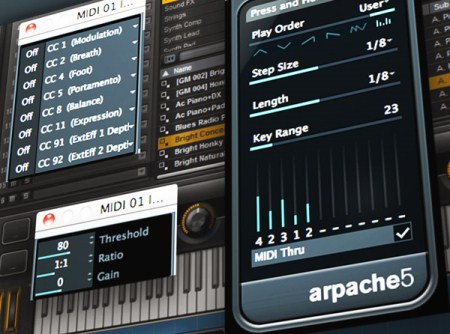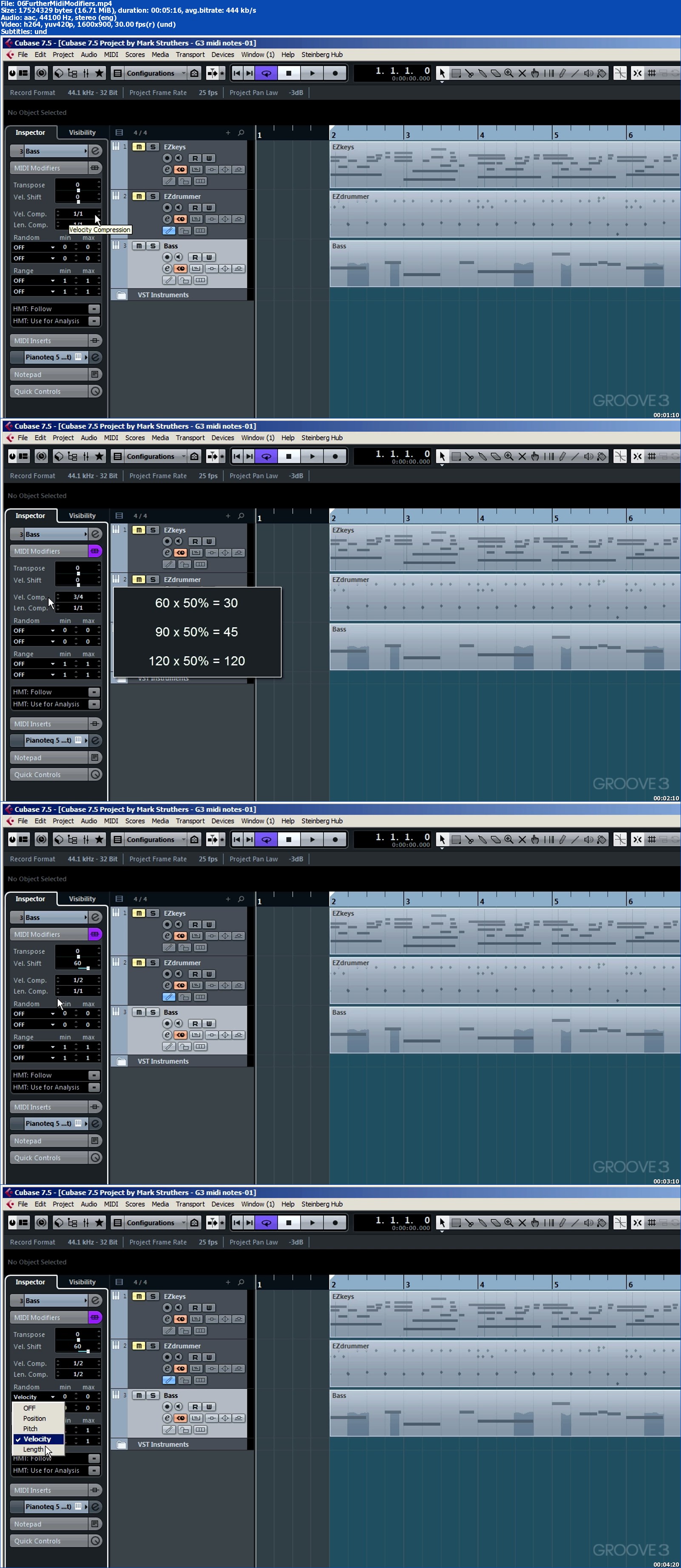
Groove3 – Cubase MIDI Explained
English | .MP4 | aac, 44100 Hz, stereo | h264, yuv420p, 1600×900, 30.00 fps(r) | 405MB
Genre: E-learning
Discover the power that MIDI brings to Cubase as veteran Steinberg expert Mark Struthers takes you on a MIDI journey in “Cubase MIDI Explained”. Learn all the key MIDI features and functions that will make composing and editing with MIDI in Cubase a breeze.
Mark starts by showing you the fundamental differences between MIDI and traditional Audio in Cubase, and then how the Key Editor plays a pivotal role in how MIDI is viewed in Cubase. Next, explore the MIDI Inspector to see how its Parameters, including MIDI Routing, work together with Expression Mapping, MIDI Inserts and Sends, and other Panels to streamline your workflow.
From there, Mark shows you all of the available MIDI Recording Options you have to work with, as well as how to Import an Existing Recording for manipulation. Because VSTis go hand in hand with MIDI in Cubase, Mark demonstrates how to use MIDI to drive any number of VSTis for Production and Recording purposes. You’ll also see how to Manually Add Extra MIDI Notes for greater editing and control on your tracks, and how Adding Extra Controller Data can make for deeper MIDI editing.
Mark now shows how MIDI Modifiers, such as Velocity Compression and Velocity Shift, can enhance the Dynamics of your MIDI track, and how Velocity Compression is different from traditional Audio Compression. You’ll then experience how MIDI Modification can be used to make a Snare Drum Pattern sound more natural and lifelike. To help make your Workflow more efficient, Mark reveals how to access and use Cubase’s Virtual Keyboard to Input MIDI Notes and Controller Information.
Various Layering Options to enhance your sound are then shown, including Multi-Timbral Layering, Key Editor Multi-Layering, and Layering With Sends. From there, Mark walks you through the use of MIDI Effects within an Existing Recording using two versions of Arpache, and how to Export a MIDI Event to a New File after changes have been made.
Finally, Mark uses the Auto LFO to bring life into a static Bass Line, and shows the power of VST Expression to make a MIDI Performance Sound More Natural. Afterwards, he walks you through the process of Converting your MIDI to Audio Tracks using the MIDI Control Plug-in. Cubase offers so much in the MIDI department, and Mark shows you how to harness its full power in this MIDI centric series… Watch “Cubase MIDI Explained” today!
Mark starts by showing you the fundamental differences between MIDI and traditional Audio in Cubase, and then how the Key Editor plays a pivotal role in how MIDI is viewed in Cubase. Next, explore the MIDI Inspector to see how its Parameters, including MIDI Routing, work together with Expression Mapping, MIDI Inserts and Sends, and other Panels to streamline your workflow.
From there, Mark shows you all of the available MIDI Recording Options you have to work with, as well as how to Import an Existing Recording for manipulation. Because VSTis go hand in hand with MIDI in Cubase, Mark demonstrates how to use MIDI to drive any number of VSTis for Production and Recording purposes. You’ll also see how to Manually Add Extra MIDI Notes for greater editing and control on your tracks, and how Adding Extra Controller Data can make for deeper MIDI editing.
Mark now shows how MIDI Modifiers, such as Velocity Compression and Velocity Shift, can enhance the Dynamics of your MIDI track, and how Velocity Compression is different from traditional Audio Compression. You’ll then experience how MIDI Modification can be used to make a Snare Drum Pattern sound more natural and lifelike. To help make your Workflow more efficient, Mark reveals how to access and use Cubase’s Virtual Keyboard to Input MIDI Notes and Controller Information.
Various Layering Options to enhance your sound are then shown, including Multi-Timbral Layering, Key Editor Multi-Layering, and Layering With Sends. From there, Mark walks you through the use of MIDI Effects within an Existing Recording using two versions of Arpache, and how to Export a MIDI Event to a New File after changes have been made.
Finally, Mark uses the Auto LFO to bring life into a static Bass Line, and shows the power of VST Expression to make a MIDI Performance Sound More Natural. Afterwards, he walks you through the process of Converting your MIDI to Audio Tracks using the MIDI Control Plug-in. Cubase offers so much in the MIDI department, and Mark shows you how to harness its full power in this MIDI centric series… Watch “Cubase MIDI Explained” today!
Download uploaded
http://uploaded.net/file/hb65gwnj/Cubase-MIDI-Explained.rar
http://uploaded.net/file/hb65gwnj/Cubase-MIDI-Explained.rar
Download rapidgator
http://rg.to/file/e2bde56fb4840d5b81bed3a6cced8bdf/Cubase-MIDI-Explained.rar.html
http://rg.to/file/e2bde56fb4840d5b81bed3a6cced8bdf/Cubase-MIDI-Explained.rar.html
Download 百度云
你是VIP 1个月(1 month)赞助会员,
转载请注明:0daytown » Groove3 – Cubase MIDI Explained
与本文相关的文章
- MixWithTheMasters JACK ANTONOFF Part Of The Band The 1975 Tutorial
- Adobe Photoshop: Complete Beginners Course (2024)
- Super Hero DJs 69 BEATS – Bella Ciao TONEPLAY
- Super Hero DJs 69 BEATS – Flip the House Routine
- Ask Video Groove Guru 101 Understanding Rhythm TUTORiAL-DECiBEL
- Ask Video Roland SP-404 MKII 101 Roland SP-404 MKII Creative Sampling TUTORiAL-DECiBEL
- Ask Video Logic Pro 410 Designing Trailer Sound FX TUTORiAL-DECiBEL
- Ask Video Groove Guru 101 Understanding Rhythm TUTORiAL-DECiBEL
- Ask Video Roland SP-404 MKII 101 Roland SP-404 MKII Creative Sampling TUTORiAL-DECiBEL
- Sonic Academy How To Sound Like Fisher
- Music Protest Create Realistic MIDI Productions Using Cubase TUTORiAL-FANTASTiC
- Sonic Academy How To Mix using Universal Audio Luna with Kirk Degiorgio
